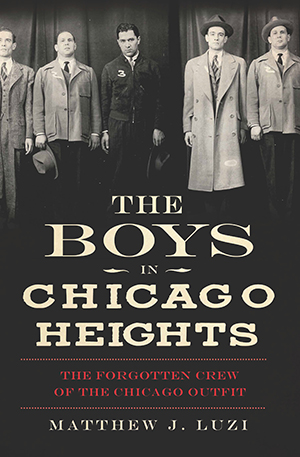
Where to Hide the Booze?
It’s a fair question: where should you hide the booze, during the era of America’s “Great Mistake?” To evade federal officers and pesky raids—in the event your local law enforcement couldn’t be bought off—bootleggers during Prohibition had to come up with some creative strategies. Author Matthew Luzi, in his book The Boys in Chicago Heights, delves into this history of sneaky drinking and running rum in Chicago Heights.
As demand for alcohol immediately outpaced supply following the Volstead Act of 1919, local manufacturers had to come up with swift solutions to slake the thirsty throats of the populace. According to Luzi, bootleggers in the Chicago Heights, IL, area employed three different fermentation methods: one that took seven days, one that took three, and one that took all of eighteen hours. Luzi:
“The seven-day method was a natural fermentation process that produced between thirty and forty thousand gallons. These operations were very large and required two shifts of men working day and night. Due to their size, these stills were operated on farms or in warehouses. In some instances, stills of this size were placed in the basement of a house with holes cut through the first and second floors to accommodate the still.” Noting that the three-day method could be staged in a garage and used a chemical process to accelerate the fermentation, Luzi records the last variant as the most mobile. “The sixteen-hour method,” he writes, “…could be operated anywhere, and the alcohol produced was commonly referred to as ‘bathtub gin.’”

But you did have to be careful, as the process created a considerable amount of excess heat. During the winter, Luzi writes, when snow covered the roofs of houses and warehouses across the Midwest, those annoying federal agents were known to conduct flyovers to see whether the roofs of any buildings might suspiciously lack any snow. Little wonder that sales of white roof paint increased during that time, right?
Unfortunately, it seems there was no way to protect against the ‘smell test,’ in which the Fed would walk through areas known for bootlegging activity and see whether they could detect the colorful odors of the fermentation process. Perhaps this is why so many rumrunners set up their stills on their farms—they weren’t just secluded from urban areas, but the barnyard aromas would mask the gases given off by the yeast. Nor was there any protection from rival gangs: after all, bootlegging (and its first cousin, illegal gambling) were big business in those years, and profit-sharing wasn’t very high on most gangsters’ lists.

Other methods — apart from simply bribing the cops, as most of the Chicago Heights crime families preferred to do — cropped up during the fourteen long years of Prohibition, as Luzi records in his history. But for amateur ‘spirit handlers’ of the present, these details are worth remembering — just in case America ever makes a similar mistake again.




